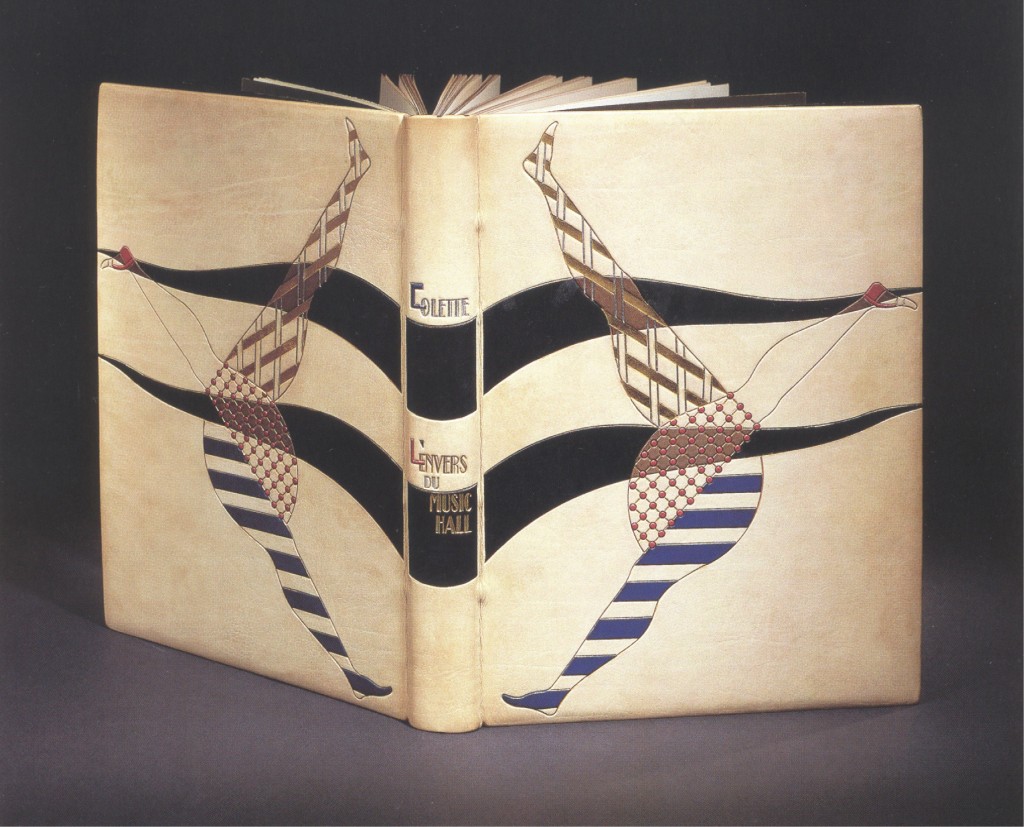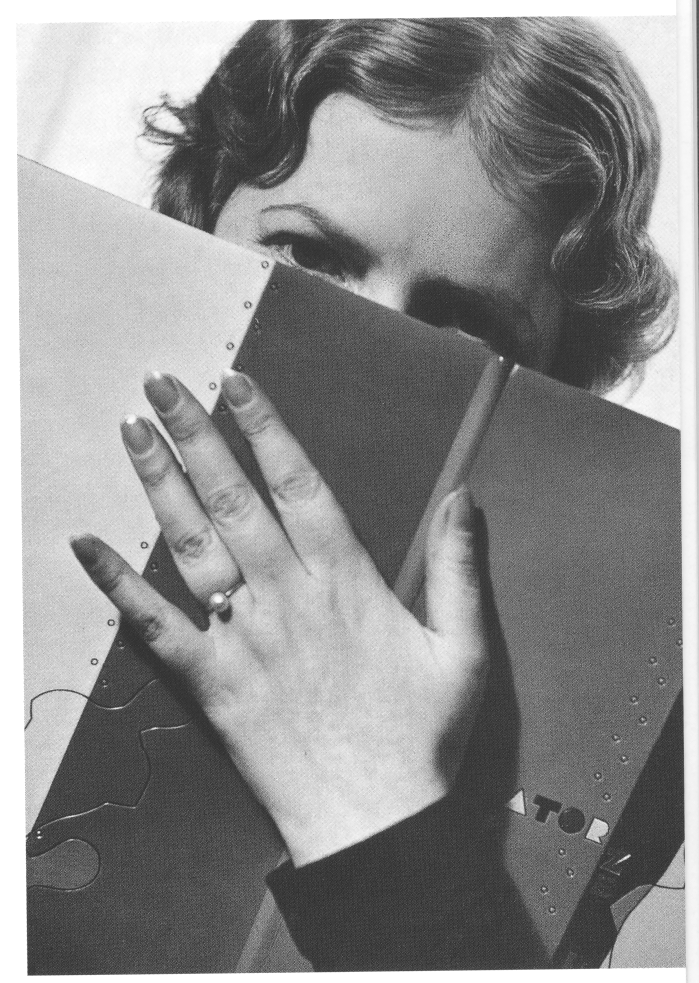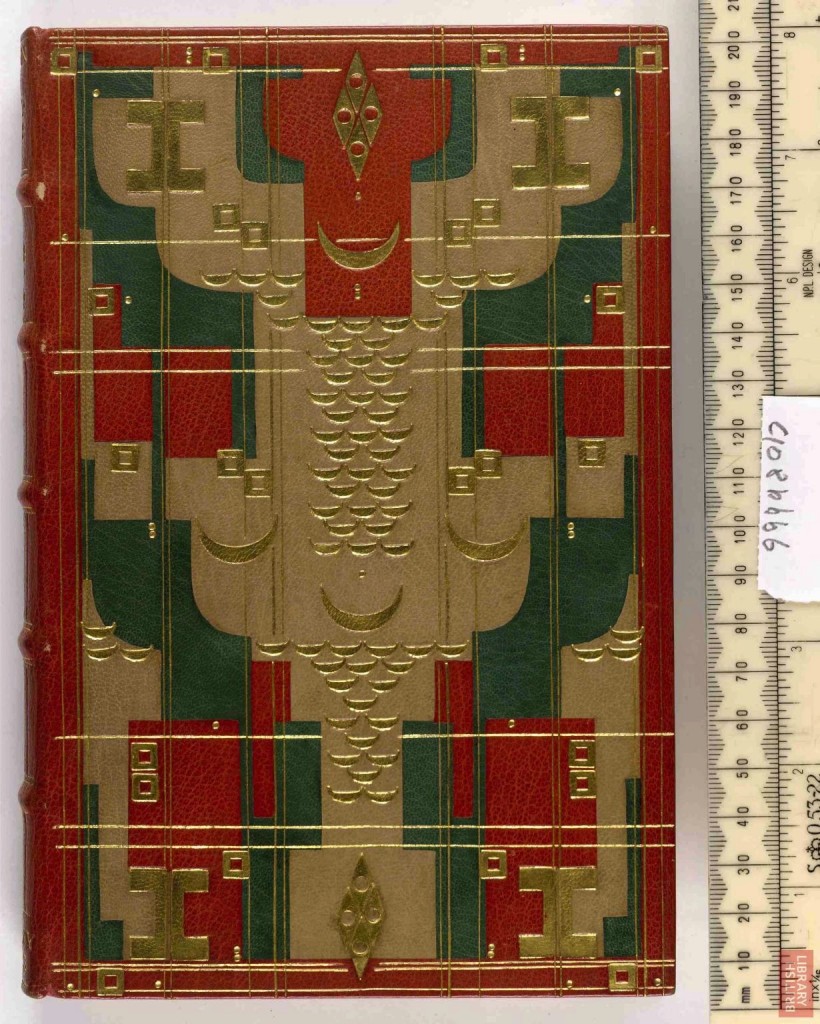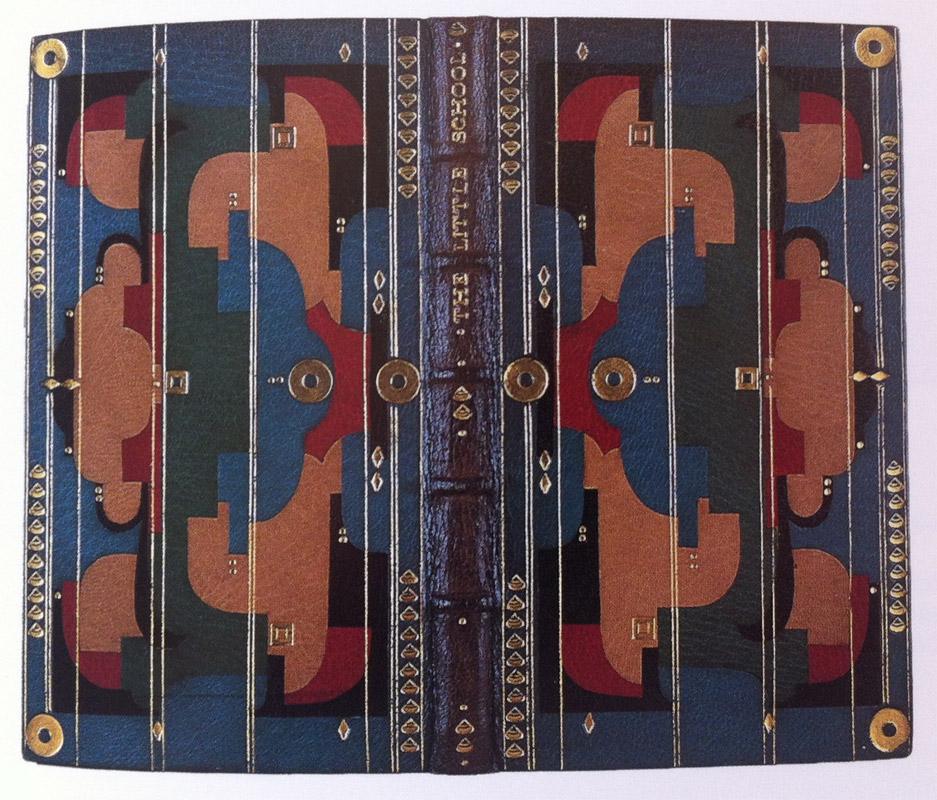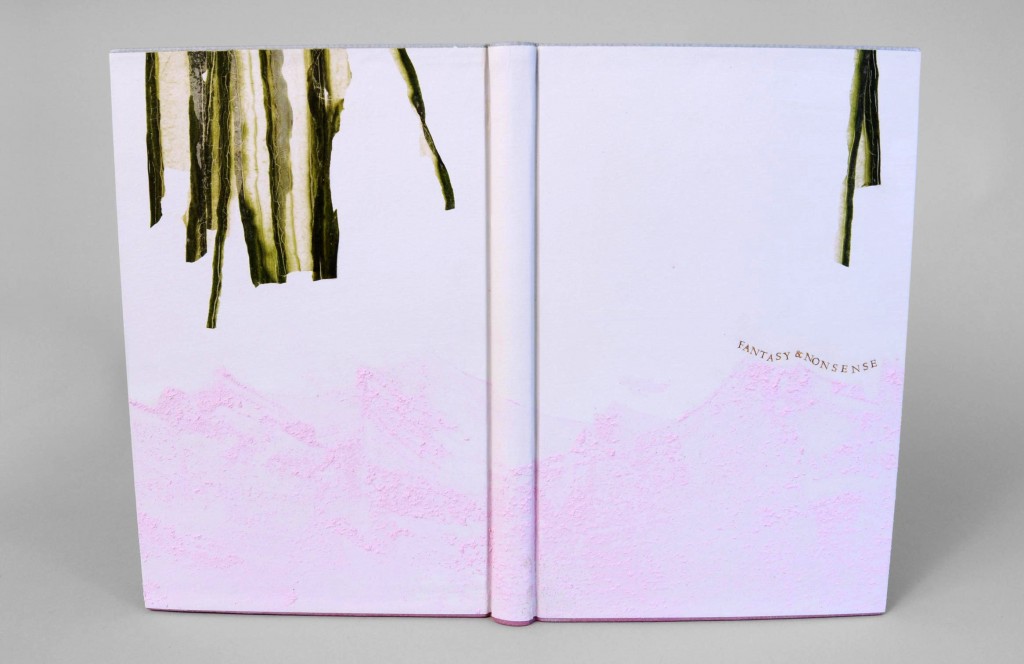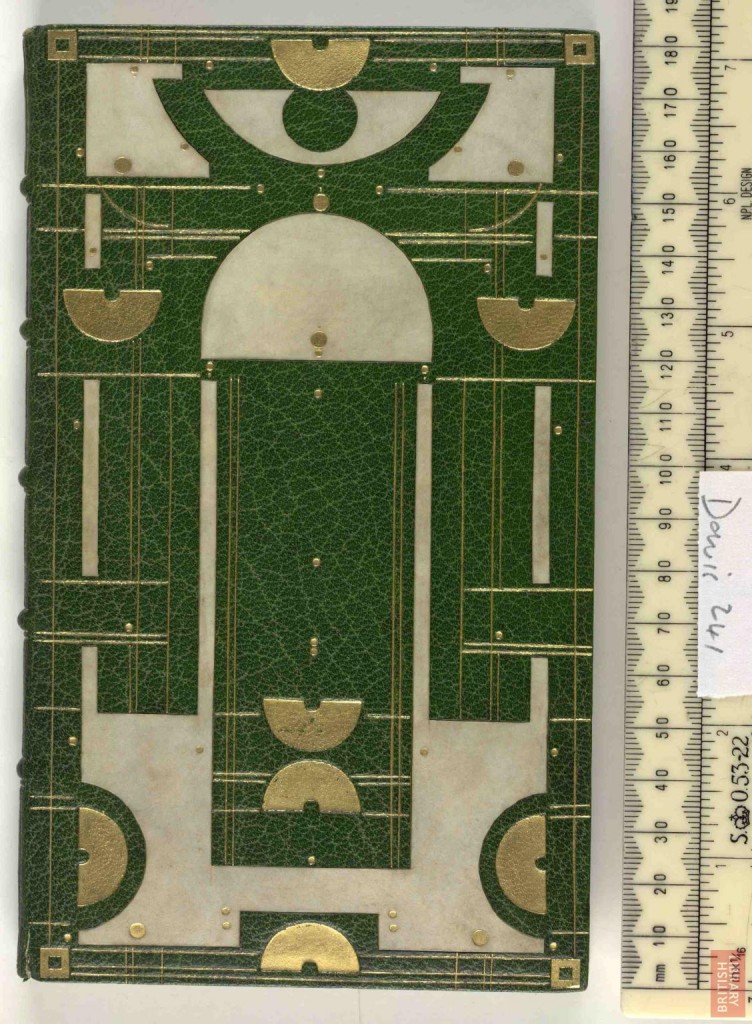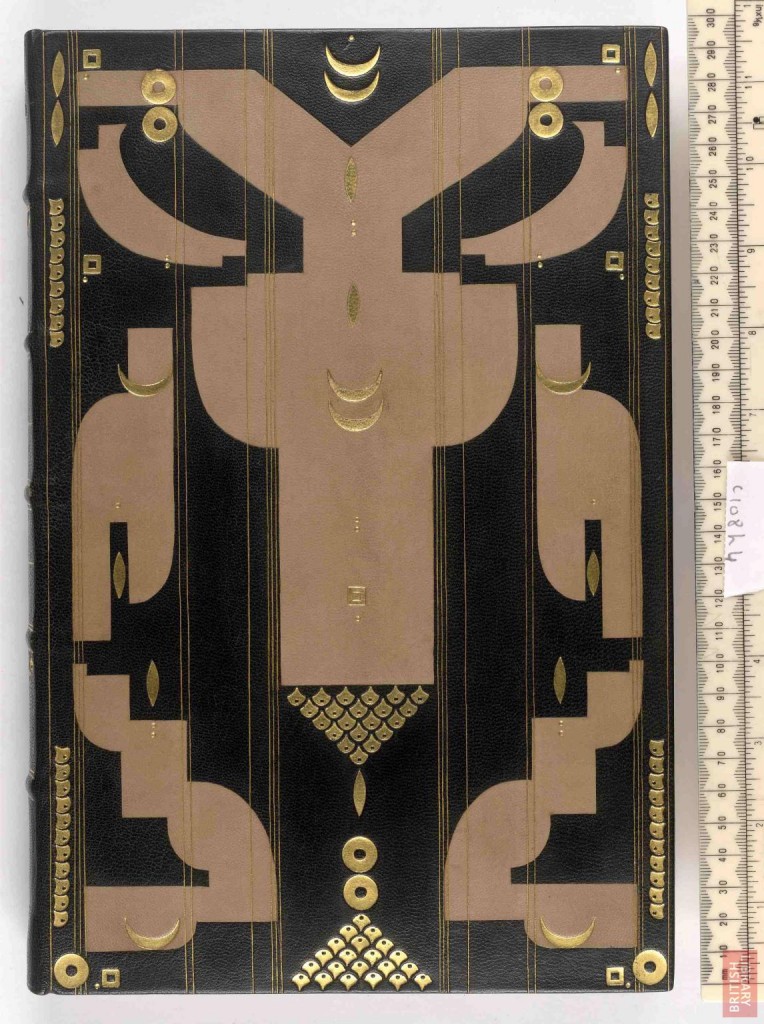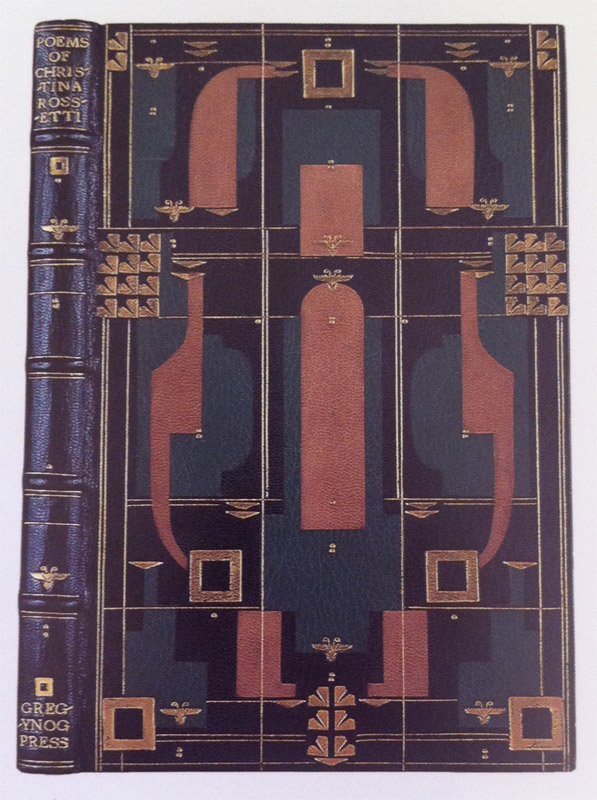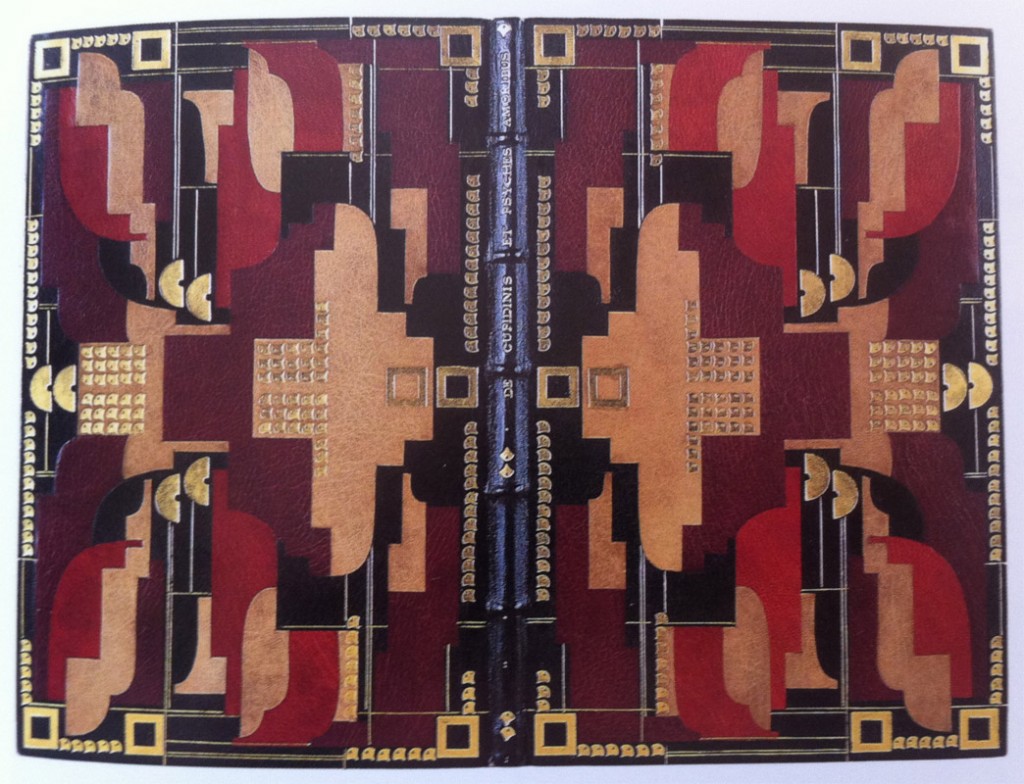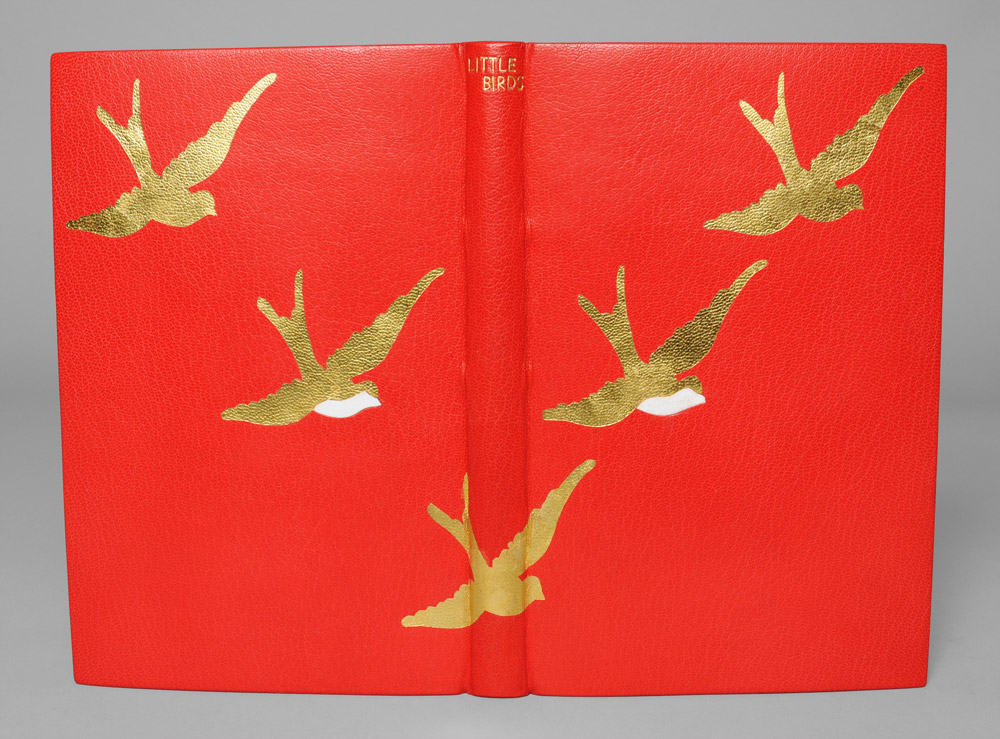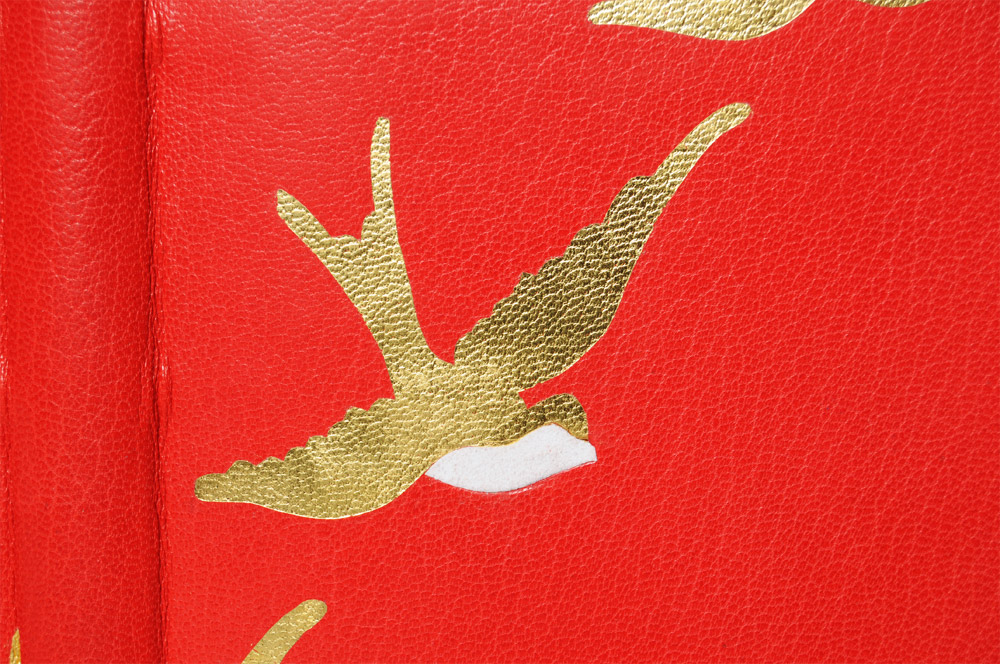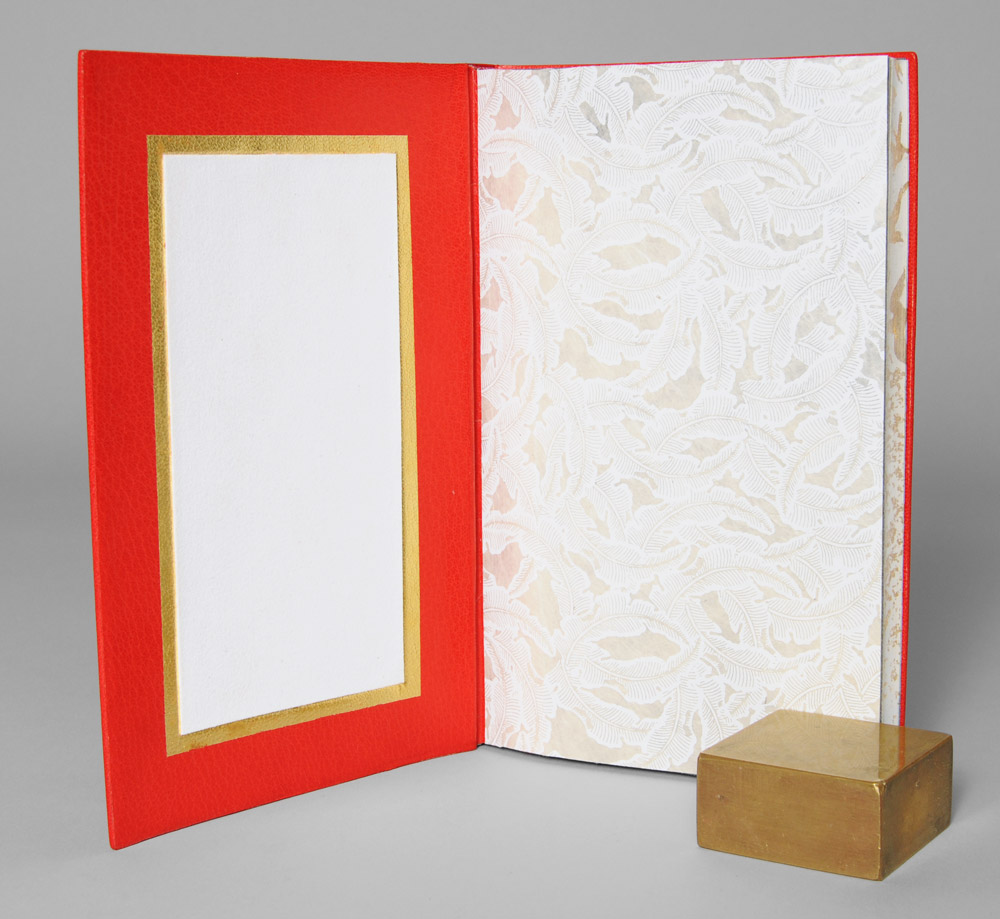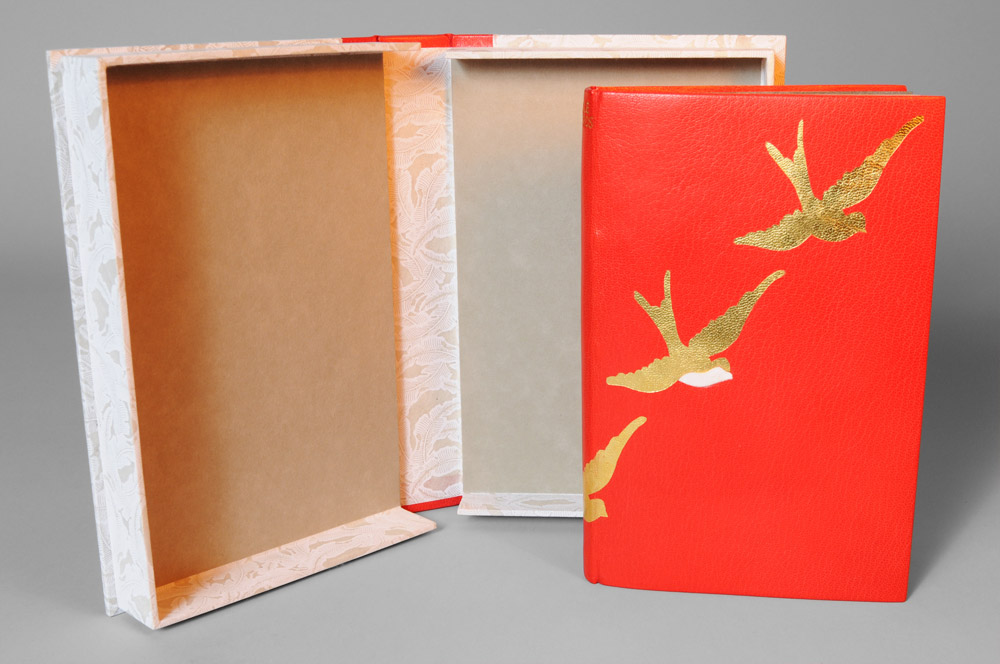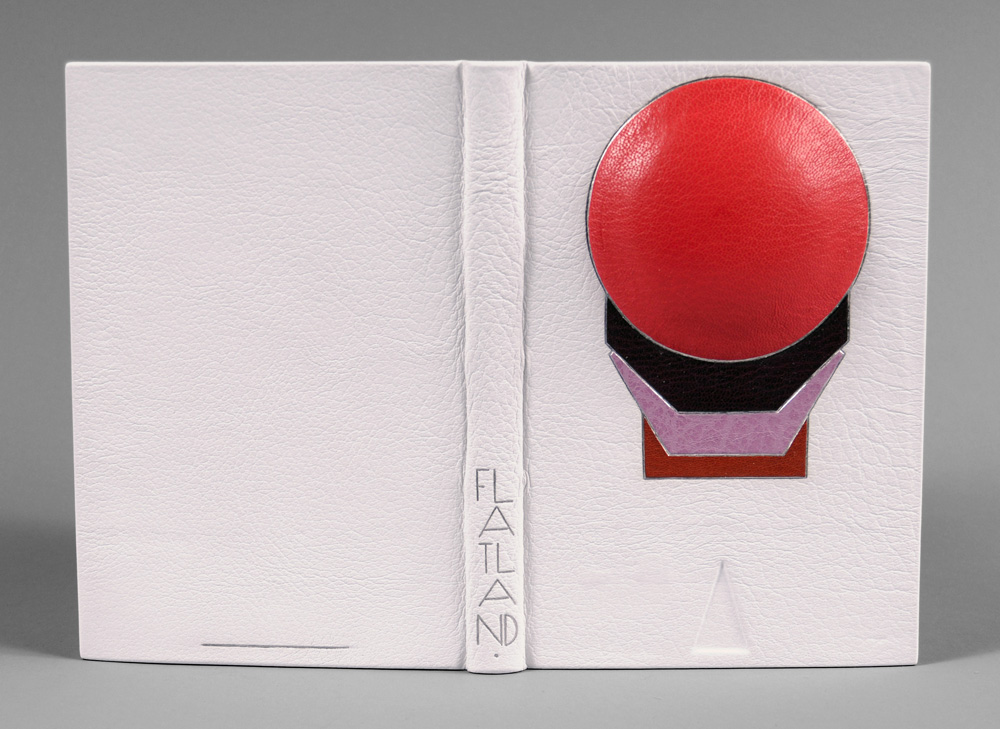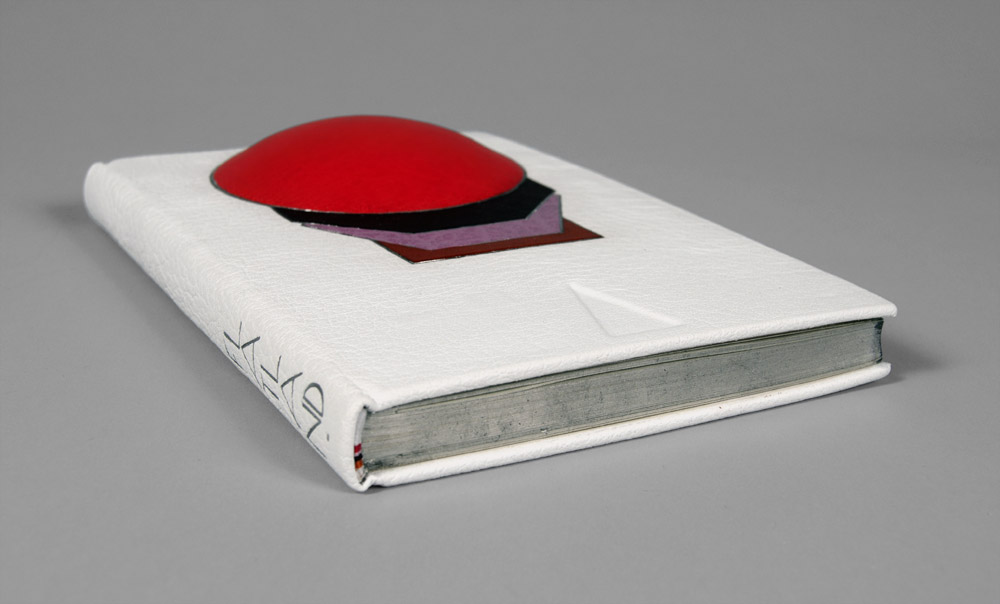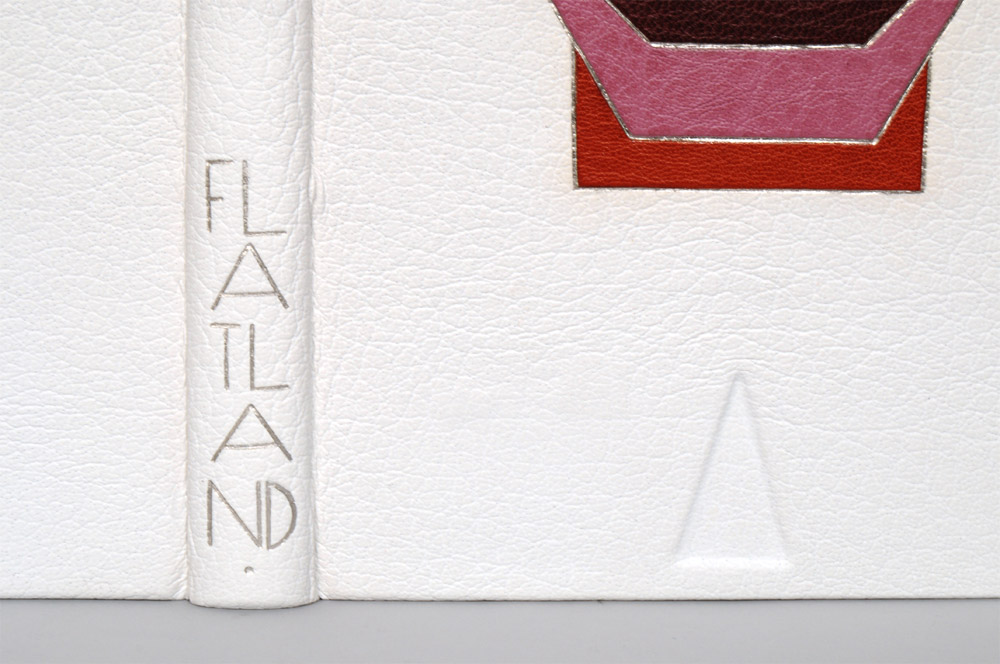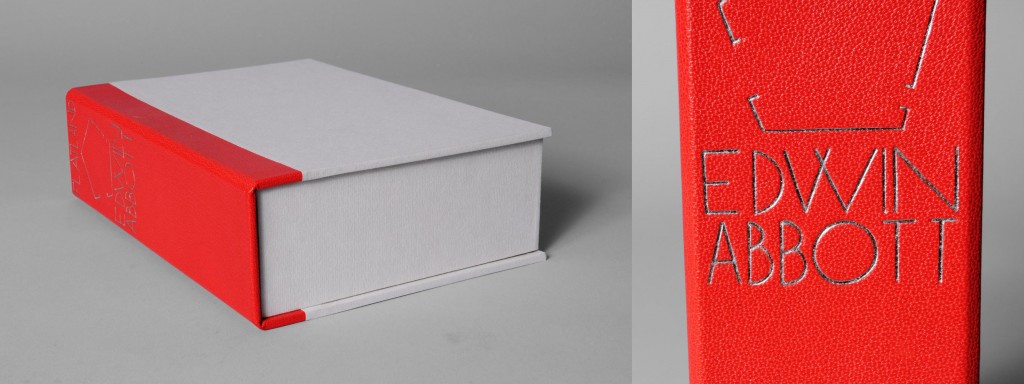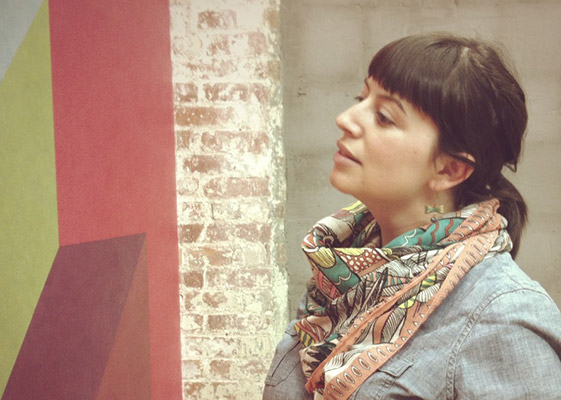This copy of Colette’s L’Envers du Music-Hall with illustrations by Jean-Emile Laboureur was printed in Paris in 1926. The binding was signed and designed by Rose Adler and executed by Emmanuel Lecarpentier in 1929 for the bibliophile Jacques Doucet. Bound in ivory calf, the dancer’s legs are highlighted with royal blue, red, beige and black calf. On the spine the author’s name has been tooled in aluminum with an inlay of royal blue calf for the initial, while the title has been tooled in both gold and aluminum with an inlay of pink calf for the initial and royal blue for the apostrophe.
Unfortunately there is not a lot written about Rose Adler. However, she is one of my favorite binders, working and living during one of the most exciting eras in terms of art and culture: Art Deco of the 1920’s and 30’s. Rose took on the profession of offering her design work as both a cabinetmaker and bookbinder. As a bookbinder she worked closely with her teacher, Pierre Legrain, who greatly influenced her design work and craftsmanship and much of her work was commissioned by Jacques Doucet.
Rose was particularly fond of calfskin because of its smooth qualities. She masterfully designed bindings, carefully considering the book itself and the materials. Like many other binders at the time, she incorporated an assortment of other materials into her work like lizard and crocodile skins, agate and lapis stones, aluminum for edge gilding and tooling, and lacquer as a finish.
Rose was born in 1892 and lived until 1959.
